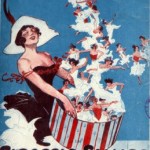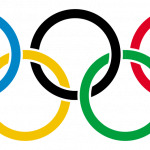Each week in The Moviegoer, Nick Olson examines new and upcoming films.
Editor’s Note: This is Not a Film is available via Netflix DVD service.
One of Iran’s acclaimed directors, Jafar Panahi, is arrested on March 1, 2010. Often critical of the Iranian government, Panahi is charged with collusion with the intent of committing crime against national security and of “propaganda against the Islamic Republic.” Due to international outcry, he is released from prison after three months but then eventually convicted and sentenced to six years in prison along with a 20 year ban from “making movies, writing screenplays, giving any interviews or leaving the country.” While his case is under appeal, Panahi is placed under house arrest. Under house arrest, he shoots a video, and has it smuggled out of Iran in a flash drive concealed in a birthday cake. The video–classified as a documentary and titled This is Not a Film–premiers at Cannes Film Festival in 2011.
And so one of the great political moments of the last couple of years is the premiere of a film that, if Iran’s asking, isn’t a film.
Given an American release in 2012, This is Not a Film is a captivating look at a man stuck in his high rise apartment; more than that, though, it’s a portrait of an artist both frustrated at his situation and yet persistently creative against authorities that would unjustly suppress his voice and impede his creative output. Under these circumstances, this documented revolution takes the political shape of sneaky subversion–a quiet but calculated filmic undermining that seems premeditated long before a cake is baked. Panahi is not content to sit idly by; instead, he creates a film disguised as an aimless home movie–and the political implications, though hidden beneath the irony reflected in the film’s title, are not so subtle.
The first several minutes of the film come across rather casually: Panahi eating breakfast, or coming out of the bathroom and changing clothes, or having tea. And yet, Panahi seems intentional in providing an introductory frame centered on two early phone conversations. The film opens with a still camera shot of a kitchen table.. Approaching a seat at the table, Panahi comes into view, begins to spread jam on his flatbread, and places a phone call that he puts on speaker phone. He calls his friend and collaborator, Mojtaba Mirtahmasb, who will eventually arrive at the apartment at Panahi’s beckoning. The initial conversation has a covert nature about it. “What did you do about that thing?” Panahi asks with economical transparency. Mirtahmasb talks about “waiting for the right moment” and “taking a chance here and there.” After telling Mirtahmasb that he “can’t say much on the phone,” Panahi asks him if he can come over and concludes, “Just don’t tell anyone you’re coming here, ok?” Panahi says bye, has a bite of flatbread, and the black title screen appears: “THIS IS NOT A FILM.”
The second framing conversation occurs a few moments later when Panahi puts his lawyer on speaker phone. He asks her if there is any news with his appeal process, and she says that there’s nothing new. She predicts that the judge may get rid of the 20 year ban, and may reduce his prison sentence, but that there is almost zero chance of an Iranian judge overturning the entire sentence. Panahi is almost certainly going to prison. Even more revealing is the part of the phone call when his lawyer says that the whole case is entirely political–not legal or judicial. There’s no appeal his lawyer can make on Panahi’s behalf because he hasn’t done anything wrong so much as he has a political statement being made against him. The only chance the prison sentence has of being overturned, she says, is if there is international pressure. It’s from this framework–inviting a trusted friend and collaborator to come over and take control of the camera, along with presenting us with his plight as described by his lawyer–that Panahi playfully crafts his inherently political film qua home movie that’s not a film. The rest of the film is a combination of everydayness–the neighbor asking for a dog-sitter, take-out food arriving, watching television news–and Panahi doing a fair bit of reflection, notably on three of his previous films.
Perhaps the most interesting–and telling–moment, though, is when Panahi uses duct tape and dining room chairs to stage a scene from his last attempted film that was denied approval by the Iranian government. Panahi describes the scene and reads from the screenplay, hoping to “create an image of it.” At stake here is Panahi’s commitment to creating images of some sort, and a willingness to not only use a camera here, but to describe a scene from one of his films that’s been specifically banned. The circumstances of the scene he’s describing adds another layer to Panahi’s measure of maneuvering. It’s about a young girl who is admitted to the university to study the arts. She comes from a “traditional family,” though, and so they forbid her to pursue the opportunity. The parents leave on a trip and “lock the girl inside the house.” And with all the doors locked, “the girl tries to find some way out of the house.”
Panahi goes on to say that he had trouble filming strictly inside the house, and that he’s asked his collaborator over to help him try to better stage how this totally interior filming will work. Or, at least, that’s what Panahi says. It seems evident, though, that this is a film about a man who has been “locked” in his house by his overbearing governmental parents, forbidden to pursue the art he loves. With seemingly all of the doors locked, he’s desperate to find a way out, but must do so in a way that’s intelligent so as to escape detection. I won’t give away the very last image, but let’s just say that, ultimately, Panahi is willing to follow the filmed image wherever it takes him, no matter the potential consequences. And there’s a wonderful suggestion here that sometimes the most subversive political move is founded on the non-violent, creative impulse. In this case, when an insecure government gets overbearing, the counter power move is a smuggled film sent to Cannes, labeled “not a film.”










